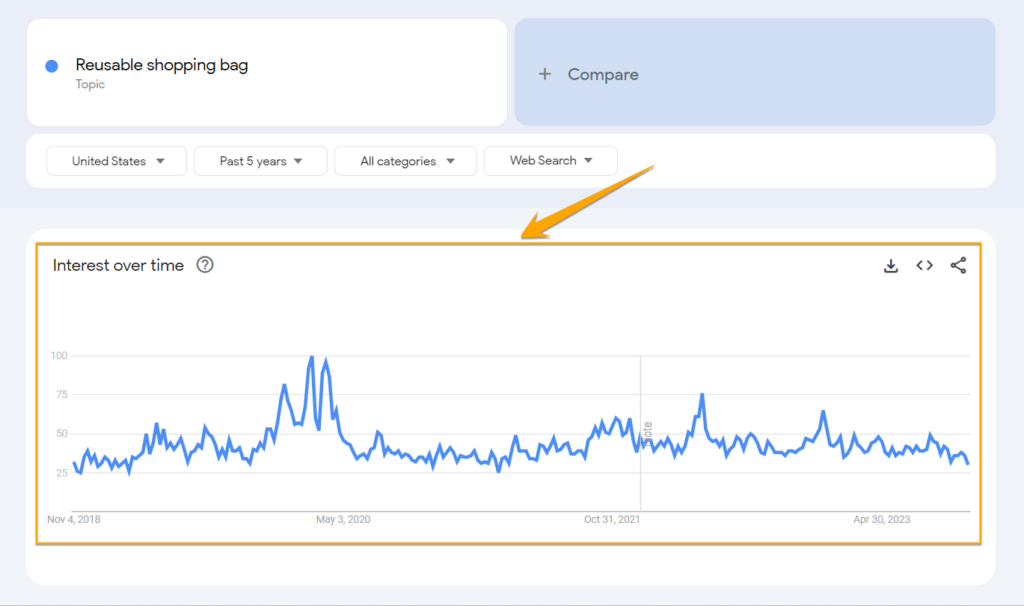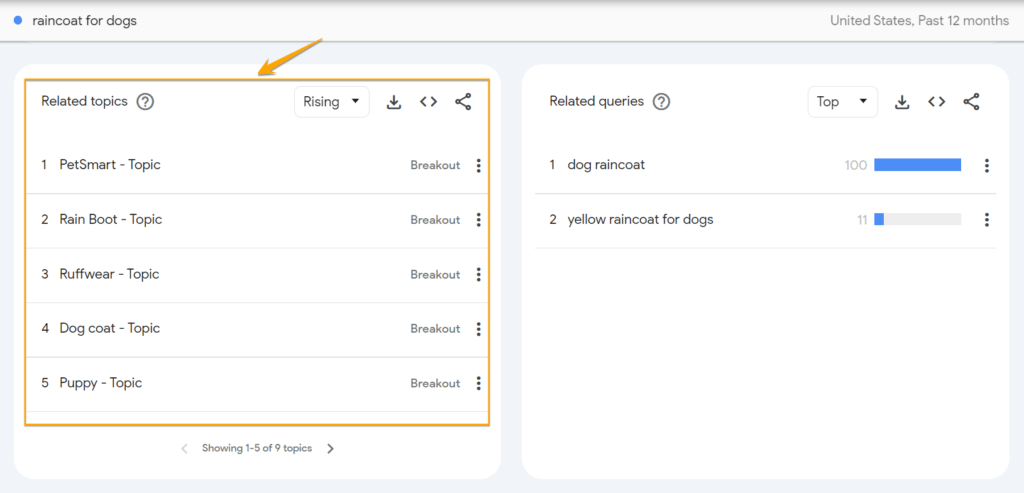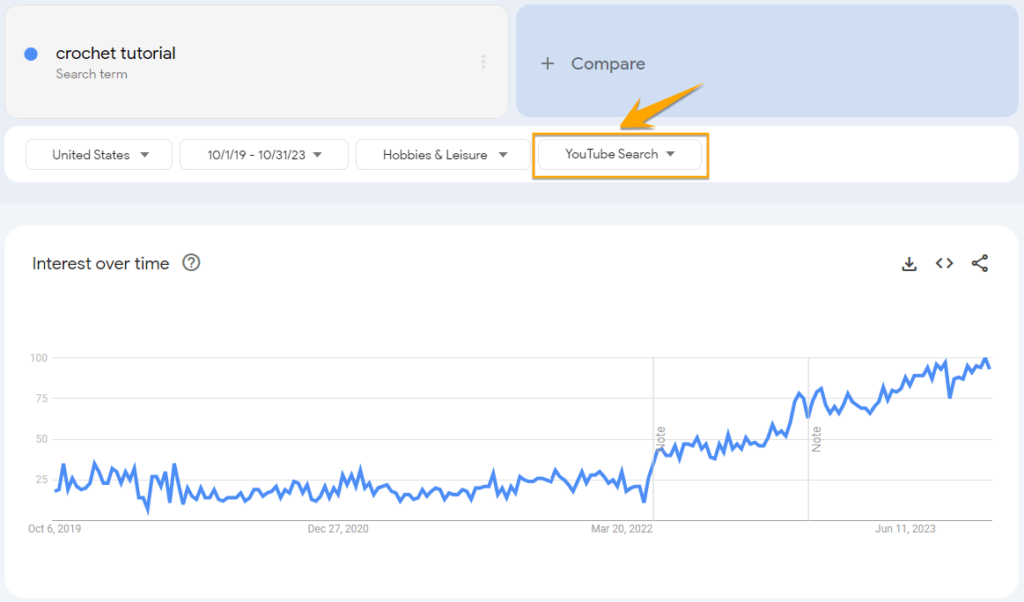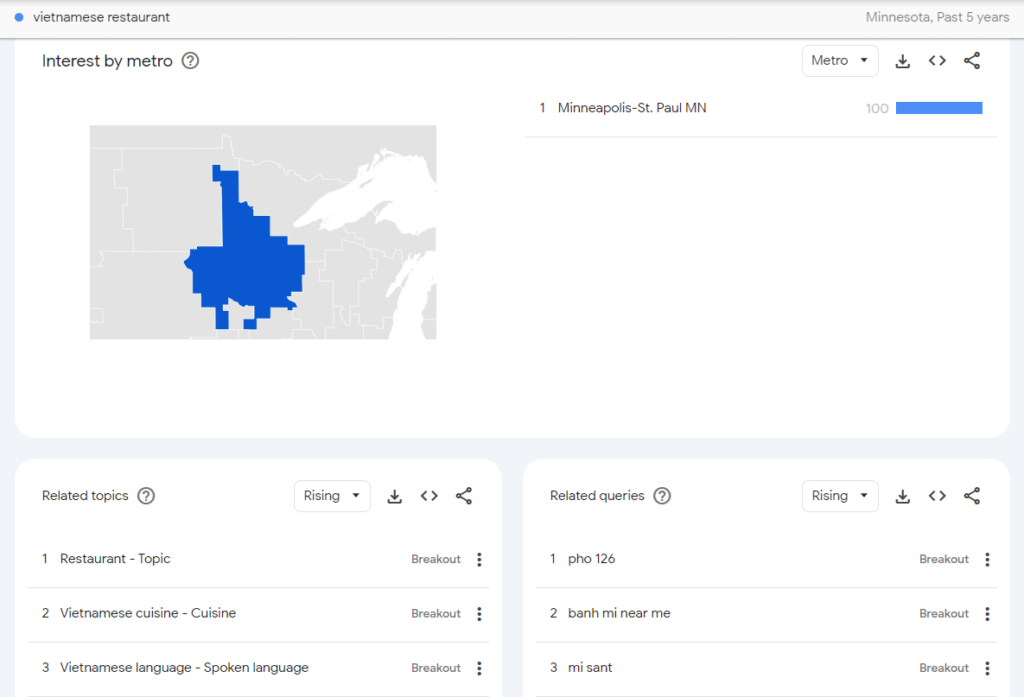What is Google Trends?
Google Trends is a free tool by Google that analyzes the popularity of search queries in Google Search. It gathers search term data from different regions and languages, and uses graphs to compare the volume of search queries over time.
Google Trends is one of the tools that you can use to analyze the popularity of search queries on the search engine giant, Google.
But what is Google Trends, and how can you use it for search engine optimization (SEO)? Keep reading to learn how to use Google Trends for SEO and drive traffic to your site!
What is Google Trends?
Google Trends is a free tool by Google that analyzes the popularity of search queries in Google Search. It gathers search term data from different regions and languages, and uses graphs to compare the volume of search queries over time.
How to use Google Trends for SEO
Here’s how to use Google Trends for SEO in seven different instances:
- Discover relevant and trending keywords
- Learn queries’ search volume trends
- Identify seasonal searches
- Discover related topics for your content marketing strategy
- Analyze YouTube search terms
- Inform your local SEO strategy
- Track your competitors
Let’s dive into each use:
1. Discover relevant and trending keywords
Use Google Trends to find relevant and trending keywords related to your business.
For example, say you’re in the business of canvas tote bags. You can type in your primary keyword and scroll down to find trending related search queries:

The tool also shows the search volume increase in percentage to indicate its popularity. You’ll find keywords marked as “Breakout,” which are keywords with a search volume increase of more than 5000%.
Breakout keywords typically have a low search volume before the period you set, so they aren’t competitive yet. Is the breakout keyword just a fad? If it isn’t, publish useful content that satisfies the search intent so you can potentially rank for it.
2. Learn queries’ search volume trends
You can use Google Trends for keyword research to discover a query’s search volume trends by looking at the Interest over time section.

The Interest over time section tells you whether the keyword is becoming popular or fading.
How did the search query perform throughout a specific period? If the search volume grows, people seek the product, service, or information about the topic. Is the search volume decreasing? If so, the topic is likely a fad, and interest is fading.
3. Identify seasonal searches
Another way to use Google Trends for keyword research is to determine seasonal searches related to your business. A seasonal search is a search that typically occurs around the same time every year.
For example, the search term “Christmas decorations” typically peaks around November to December every year, based on the graph below:

Identifying seasonal searches informs you of new opportunities for your business. It tells you the seasonal keywords that your audience uses, enabling you to publish and optimize pages so that you can rank for the terms!
4. Discover related topics for your content marketing strategy
Running out of related topics for your content marketing strategy? Leverage Google Trends for content marketing by checking out the Related topics section.
Related topics are the trending queries users searching your term have also typed in. For example, let’s say you own a retail store for dogs and want to look for topics related to one of your products, such as a raincoat:

These are typically broad topics and search queries. Consider crafting content related to these topics. You can do further keyword research using other tools with these broad topics in mind.
5. Analyze YouTube search terms
Google Trends is also a handy tool for your video strategy. You can use Google Trends to identify topics related to your business and inform your YouTube strategy.
In Google Trends, type your keyword. Click the Web search dropdown and select YouTube Search. Make sure you also select the appropriate category.
For example, let’s say you’re in the arts and crafts business and sell crochet tools and materials. Type in “crochet tutorials” to see if interest in the craft is increasing:

Based on the keyword, you’ll find that interest in crochet tutorial videos has been increasing! You can create new crochet tutorial videos to educate your prospects. Explore the other related topics in Google Trends so you can also identify other search terms that your prospects use.
You can add links to related pages in the video’s description so that your audience can find more information, which improves the user experience. Provide links to the products you mentioned or used in the video, too, so that prospects can easily visit the pages if they want to know more or buy!
6. Inform your local SEO strategy
Do you own a local business that’s only available in specific areas? Use Google Trends to find out if there’s growing interest in your business in those locations.
Under Interest by region, select your area to determine if your business’s interest is stable or growing over time. You can also check out the related topics and queries to incorporate them into your local services SEO strategy:

7. Track your competitors
Want to compare your branded keywords’ volume versus your competitors? Use Google Trends to determine how your branded search keywords fare against your competitors’ branded search queries.
Knowing how well you stack up against your competitors enables you to improve your SEO strategy. It helps you understand your competitors’ strategy and identify which pages you need to optimize for search.

Drive More Traffic with SEO.com
While tools like Google Trends can provide valuable insights for your business’s SEO strategy, they’re just one part of a comprehensive approach. Our professional SEO services are designed to help you identify keyword targeting opportunities, track your SEO performance, analyze competitors, and much more.
Get in touch with us today to discover how our tailored SEO solutions can grow your traffic!
Table of Contents
- What is Google Trends?
- How to Use Google Trends for SEO
- 1. Discover Relevant and Trending Keywords
- 2. Learn Queries’ Search Volume Trends
- 3. Identify Seasonal Searches
- 4. Discover Related Topics for Your Content Marketing Strategy
- 5. Analyze YouTube Search Terms
- 6. Inform Your Local SEO Strategy
- 7. Track Your Competitors
- Drive More Traffic with SEO.com
Writers

Related Resources
- How to Use ChatGPT for SEO Like a Pro (+ FAQ)
- How to Use Google Analytics for Your Business?
- How to Use Google Keyword Planner for SEO in 2025
- How to Use Google PageSpeed Insights for SEO
- How to Use Looker Studio for SEO
- How to Use Moz for SEO: 5 Awesome Features
- How to Use Screaming Frog for SEO: the 2025 Guide
- Keyword Generator
- List of Great Firefox Plugins for SEO
- The 7 Best Off-Page SEO Tools in 2025 [Free and Paid]
-
Read Now
Explore the top SEO tools for auditing, optimizing, and tracking SEO performance, including free options like Google Search Console and Bing Webmaster and paid platforms like Ahrefs and Semrush.
-
Read Now
Google Trends is invaluable for SEO, offering insights into trending keywords, seasonal searches, local SEO, and competitors. Learn how to use it to enhance your SEO.
-
Read Now
Discover how to leverage Google Search Console to evaluate and enhance your site’s SEO factors, from troubleshooting indexing issues to analyzing backlink profiles.
-
Read Now
Explore the importance of link building in SEO and discover seven essential tools — Semrush, Ahrefs, Majestic, BuzzStream, HARO, Pitchbox, and Serpstat.




